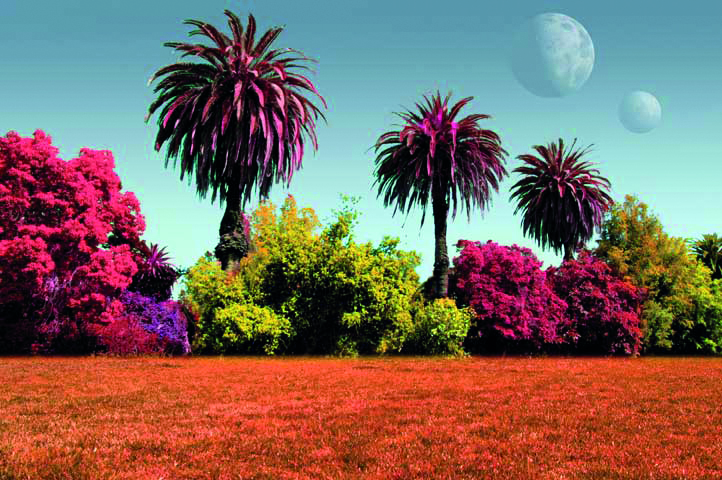What would plants look like on other planets?
by Scott Dutfield · 31/12/2020
How would forests on an alien planet survive and what might they look like?

It might seem like a concept straight out of a sci-fi movie, but over the years astrobiologists have tried to determine what plant life might look like on other, potentially habitable, planets. On Earth, the majority of plant species sport a lush green colour due to a pigment called chlorophyll. This pigment is vital to the self-feeding process of photosynthesis. The plants on our home planet display their green colour as a result of their ability to absorb all the wavelengths of visible light, except for the wavelength that matches the colour green.
As a result these wavelengths are reflected from the plants’ surface, making it appear green to the human eye. However, plants that might live outside of our planet or indeed our Solar System might not share the same aversion to the colour green.
To form a picture of what plants might look like on another world, the answer lies in the type of star a resident exoplanet orbits. Typically planets with the potential to sustain life orbit either an F, G, K or M type star. Our Sun is a G type star. These star types emit different wavelengths of light that plants and other photosynthetic organisms such as algae can utilise for photosynthesis. However, differences in the wavelengths of light emitted by these exoplanet-supporting stars can drastically change the appearance of alien planets. For example, cooler K and M type stars emit low levels of light, as much as half the amount that reaches Earth’s surface. This may lead to light-hungry plants absorbing as much light as possible with little reflection, and may appear dark shades of red or even black.
Changing colours
How different stars can dictate the appearance of plants on other planets
G type star
Around 40 per cent of the electromagnetic radiation emitted from our Sun is the full-colour spectrum of visible light. With the exception of green-coloured wavelengths, plants on Earth absorb all other colours, particularly red and blue wavelengths. It is the energy from these two colour wavelengths that provide plants with enough energy to carry out photosynthesis.
F type star
Compared to our own Sun, F type stars are typically hotter, bluer and radiate more harmful ultraviolet light. When bombarded with abundant blue light it has been theorised that an exoplanet’s plant life might reflect excess blue light and UV radiation for protection, appearing with a bluish hue. However, it is also possible that they may have evolved a way to harness the blue light and reflect green and red, which would appear to us to have a yellow tint.
K type star
Sitting between G and M type stars, it’s difficult to predict what colour photosynthetic life on planets orbiting K type stars would be. Similar in size to our Sun, alien plant life may have evolved in a similar way to those on Earth. However, K type stars release less visible light and a greater amount of near-infrared light, which would result in plants photosynthesising with all the light they can get their leaves on, resulting in much darker foliage.
M type star
With an average mass of around 0.3 times that of the Sun, M type stars are some of the smallest known stars. This also means that the light energy they produce is also minimal, but still enough to possibly support photosynthesis. With a limited amount of light, plants around these stars might not be as picky with what wavelengths they can absorb and might not reflect any colour, potentially appearing black.
This article was originally published in How It Works issue 135
For more science and technology articles, pick up the latest copy of How It Works from all good retailers or from our website now. If you have a tablet or smartphone, you can also download the digital version onto your iOS or Android device. To make sure you never miss an issue of How It Works magazine, subscribe today!




